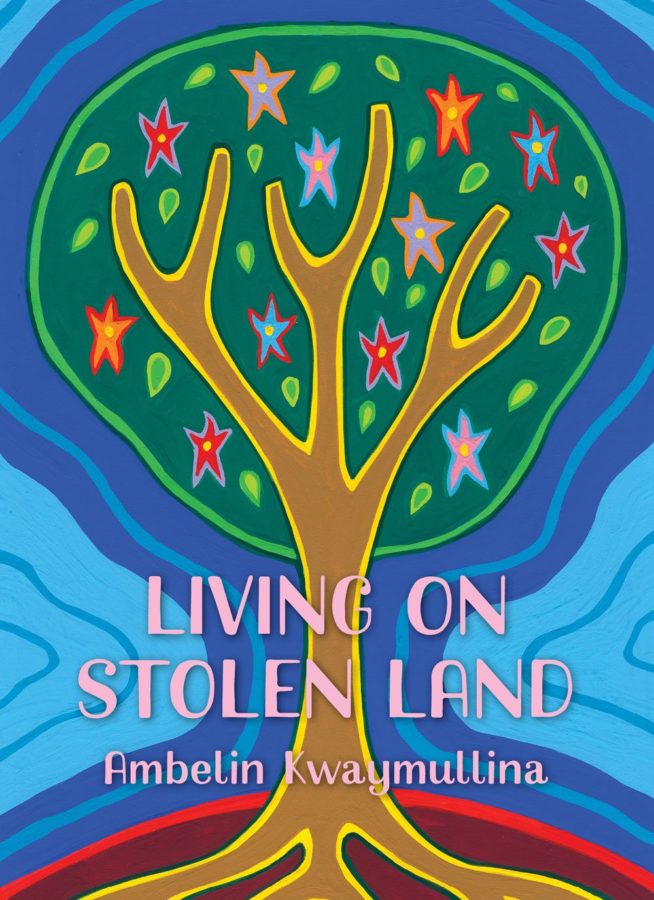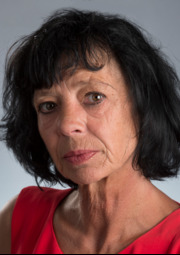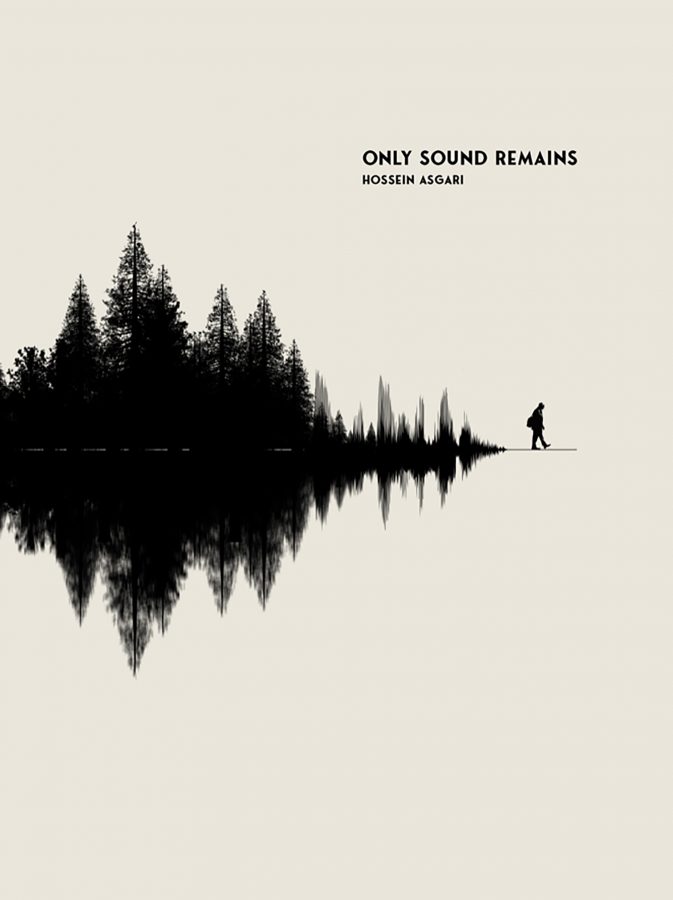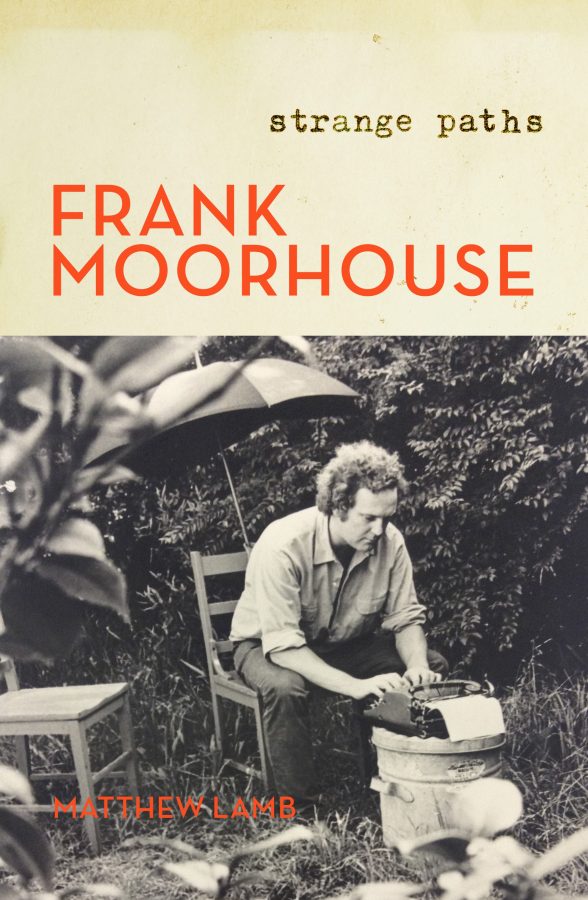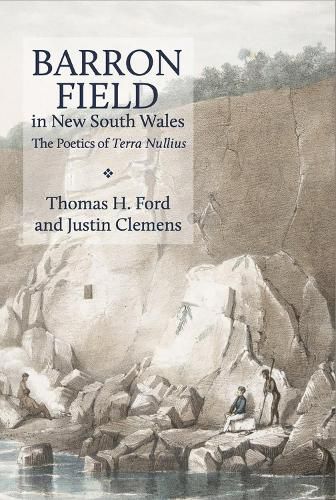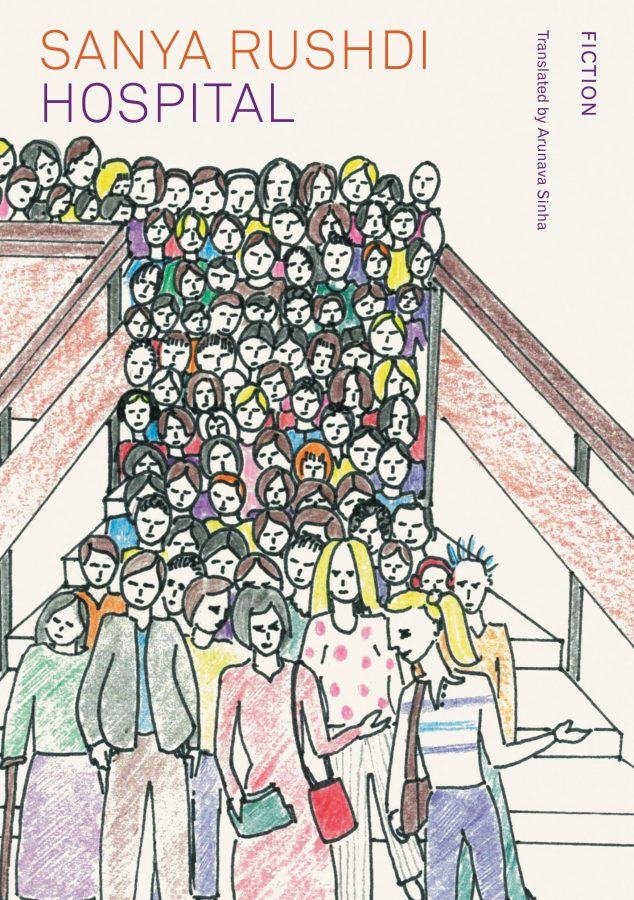Living on Stolen Land: Deconstructing the settler mythscape
Living on Stolen Land is many things. Its slim form may suggest a light read. But this little book is anything but. Ambelin Kwaymullina has stated that Living On Stolen Land is her reflection on what it means to be born on and to live on the stolen land of Ancestors.
Kwaymullina belongs to the Palyku people of the eastern Pilbara region of Western Australia. She is a legal academic, a writer and illustrator who writes across a range of western genres including Young Adult, speculative fiction, poetry and non-fiction.
Early reviews have described Kwaymullina’s work as ‘a collection of free verse’ ‘prose poetry’, a ‘poetic manifesto’. Genre is something that preoccupies western theorists, critics and reviewers. From a non-western position, genre appears to be a self-imposed border; a boundary that continues to contain and impound western critics and their criticisms, who debate form before they can proceed to the message of the work itself. Trying to pin one or other western-defined label on a work such as this is an example of a pernicious settler practice that Kwaymullina critiques in this work – of naming to claim, and to tame. She explains this form of introduced thinking early on in the book –
Western thought-ways
were heavily influenced
by the reductionist idea
that the whole was never more
than the sum of its measurable parts
– as opposed to an Indigenous world view that sees
the whole is more than its parts
and the whole is in all its parts.
Settler readers and academics who fixate on genre often miss the message because too much time is spent on debating form and arbitrating where this work – and that of fellow Indigenous writers, and Indigenous peoples more broadly – might ‘fit’ in the western order of things. Caught in the mind of settler academics is a dangerous place for First Nations peoples to be. It is a prison that entraps us all – a space of stereotypes and ingrained assumptions transmitted through the settler discourse of nation, ‘settlement’ rights and belonging. This discourse permeates introduced governance structures, national histories, literary canons, media, the education system and popular culture of bronzed Aussies, big open spaces, an unpopulated outback, battlers, a classless society and easy-going-ordinary Australians.
I read this work as a story in several movements that is a charter for settler decolonisation. The opening poem describes the current state of colonial Australia:
You are on Indigenous lands
swimming in Indigenous waters
looking up at Indigenous skies
This poem elicits the important – and still misunderstood and under-discussed – difference between settler colonialism and extraction colonialism. Namely that extraction colonies are robbed and depleted of natural resources and Indigenous peoples are enslaved, pushed to the margins, forced off homelands, displaced and left to pick up the pieces and mend the damage the colonisers have left. And colonisers don’t just leave. They are forced out by solidarity movements of the people they have displaced and robbed. Because, in extraction colonies, Indigenous peoples remain majorities; and the invader moves in with governments, military and commerce, but they do not bring large, permanent diasporas of settler peoples as part of an ongoing cultural genocide. In settler colonies, Indigenous peoples are always minorities, because not only does the invasion never end and the invaders never leave – but the invasion is repeated and the invaders remain and increase.
It means
being part of settler colonialism
a form of colonisation
where invaders came
and never left
Not like places
where the colonising nation-states of Western Europe
established outposts
upended ancient governance structures
oppressed the peoples
stripped the land of wealth
but ultimately
went away.In settler-colonial places
like those
that settlers named Australia
New Zealand
Canada
United States of America
Settlers never went away
Instead they sought
to permanently replace
Indigenous worlds with their own
This unequivocal piece cuts right to the heart of the founding myth of nation, what I call the settler mythscape, that follows. The modern invaded space of Australia as a nation has depended for its survival since 1788 on the creation of a mythscape of ‘arrival, progress and belonging’. Settler colonies are not just built by armies and governments. These are just the bones – the skeleton of the invading presence. The flesh and blood of the invaders comes from the stories that they invent and import. This is the mythscape of the settler nation. The empty land, the peaceful and gradual settlement, the underdeveloped peoples, the sparse population are just some of the settler myths handed down through the cultural transmission of the western education system that settler peoples are comfortable and familiar with. Living on Stolen Land deconstructs this mythscape, bit by bit.
Living On Stolen Land is divided into four parts, or movements. Each one teases out the hubris of settler colonialism. Kwaymullina said: ‘I wrote this book for all non-Indigenous people wanting to create better relationships with Indigenous peoples. It is a call to ‘Settlers to take meaningful action.’ Action is beyond awareness. It shifts the emphasis of responsibility from the current passive discourse of awareness to action.
Mainstream institutions seldom initiate questions about attitudes and practices so much as they co-opt and reframe questions that Indigenous peoples have been relentlessly asking for decades. Cultural Awareness Training is a buzz word and an ‘institutional cure all’ for addressing white privilege and a general lack of knowledge of and about First Nations Peoples and cultures. Yet our experience shows that awareness neither equates to or, transforms to action. Settler Australians are already aware of many injustices – the Stolen Generations, the findings of the Royal Commission into Aboriginal Deaths in Custody, the Bringing Them Back Home Report, the over policing of Aboriginal communities, lower mortality and higher suicide rates, police violence and racism are all ongoing colonial legacies that most settler Australians are aware of. Awareness is just one step in a longer, continual movement towards reconciliation, but awareness on its own changes nothing unless it is accompanied by action. In this case the action needed is, as Kwaymullina’s writings evidence, to acknowledge and take responsibility for living and profiting on and from stolen land.
Collectively all four movements are a poetic charter towards decolonisation. The first movement, You Are On Indigenous Land, opens with a poem called Stolen Land. In this piece, Kwaymullina sets up a framework, through judicious use of words, that interrogates settler claims to universalism. In the colonising discourse this translates in theory and practice as cultural chauvinism that recentres Anglo-western values, beliefs and practices as both normal and desirable. Under the isolating eye and carefully crafted words of Kwaymullina a decentring process begins here, starting with the Anthropocene.
There are no trees
rivers
hills
stars
that were not
are not
someone’s kin
The decentring continues through Kwaymullina’s repeated use of the plural to describe the systematic destruction of invasion across Aboriginal Countries.
The story of settler-colonisation
is the story of many apocalypses
These ‘frontier apocalypses’ were followed by ‘structured violence’, ‘protectionism dystopias’, ‘stolen children’ to ‘make Indigenous peoples’ like second class settlers.
Then only the settler world would exist
and there could be no challenge
to the Settler right to belong
The opening poem ends with a testimony to the continuing resistance and resilience of Indigenous Peoples as the ‘enterprise of annihilation’:
founded on the rocks
of Indigenous resistance
which like the ancient stone
embedded in many Indigenous nations
flows from the heart of the earth
with only the tip appearing
above the surface
The ‘tip that appears above the surface’ is the power of the locale; and the capacity of small spaces as the sites of mighty force and change.
Torres Strait Islander academic Martin Nakata in his influential work Discipling the Savages: Savaging the Disciplines (2007) has written of the power of the locale as a crucial site of both conflicts and change; and a place that is constantly in a state of flux. Nakata defines the locale as ‘a site of Indigenous resistance, contestation and refusal’. This assumes that far from being singularly the passive victims of others, historically and through to the present Indigenous Peoples have always (my emphasis) been engaged at the Indigenous-Western interface. Focus on the locale as a site of agency destabilises the amorphous power that western universalisms claim. In addressing the locale, Kwaymullina’s poetry redisperses and deconstructs the conglomerate nation as a series of invasions and a series of ongoing violent structures.
In bringing the locale to the fore Kwaymullina reveals and dismantles the myth of nation as a series of interconnected locales. This calls for settlers to address the ‘tip’ of colonialism – the space they claim that is stolen land and everyone is responsible for ‘profiting from and benefitting on Indigenous land’. The notion of locale peels away the layers of discursive circumscription of the Indigenous position set within the bigger picture of constructed nation by western academics.
Western myths of universalism are further demolished through Kwaymullina’s critique of colonial time. In a verse called Time western time arrangements are described as:
A version of time
that is always carrying people away
from an unchangeable past
into an unknowable future
Giving the illusion of progress
regardless of whether
anything has changed.
Linear time is something that settlers brought here. Like many things that have ‘been brought’ here since the first invasion of 1788 it is an introduced practice that ‘creates distance’, ‘makes things that happened a hundred years seem further away’and is ‘weaponised against Indigenous peoples’ calling our ways of life ‘backward’. This version of time fosters inactivity as things that ‘happened a long time ago’ are, as far as Gregorian time is concerned, over and done with.
Kwaymullina shows Indigenous time to be cyclic. One period does not end, and another begins independently or unrelatedly; all times are important, and no time has been resolved:
It moves in cycles
It exists in space
in Country
and is as susceptible
to action and inaction
as any other life
She reminds us that the ‘ticking of clocks’ and the ‘turning of calendars’ move nothing ‘closer or further away from anything else’. This piece is a further testimony to resilience and resistance within the locales of Indigenous Countries asit reminds its readers that Indigenous peoples still see and consider time in cycles as ‘how far we have come from the apocalypses and dystopias of settler colonialism’ is not measured through any colonial device or invention. It is ‘measured by the degree/ to which affected relationships/have been brought into balance/have been healed.
Thinking of time this way is part of our ‘gift’ of strength and ductility in the face of continued invasions and surveillance. It is also a responsibility.
It is a responsibility
because individual actions matter powerfully
radiating out
across all that would be thought of
in a linear sense
as past
present
future.
It is a responsibility that Kwaymullina’s work calls for settlers to emulate as meaningful action.
The second movement, Perspectives, is composed of four verses.Each onecontinues to unpick false claims to universality. Deluded consciousness and the apocryphal claim that settler positionality is a universal standpoint is laid bare. In the opening poem, Principles, Kwaymullina describes the multiculturalism and reciprocal trans-coexistence that was practiced by Indigenous peoples across the continent before the invasion:
Indigenous peoples
have many differences between us
but there are also commonalities
including our systems are holistic
process focussed
and our knowledge
comes from connections
She continues:
across all Indigenous homelands
there is a fundamental reciprocity
that if you care for Country
Country will care for you
The poem ends with a poignant statement that is a key to understanding the relationality and situatedness of knowledge and behaviour:
We are many different nations
and context shapes meaning.
As this movement unfolds Kwaymullina deconstructs the myth of objective knowledge in the same judicious, straight-talking style with which she eroded of the mythscape of the amorphous nation through the power of the Indigenous locale.
These different thought-ways
led to different views
of the same space
While we are acutely aware of the situatedness and culturally grounded nature of the knowledge we possess of connection, people and place; and the different culturally bounded and grounded situatedness of settler knowledge and practice post invasion; settlers remain largely blind to their own culturally limited standpoint, assuming it to be ‘normal’.
For example
ask a settler reductionist thinker
to explain a hill
and they might speak
about its height
its composition
of the rocks that form it
about the first Settler
to reach the peak
or to ‘discover’
a hill that had been known about
and loved
for thousands of years
Settlers do not understand that their standpoint is culturally bounded and grounded. All that escapes from the settler vision does not exist for the purposes of their narratives of place and arrival. It is invisible – omitted from the story of Australia as a modern nation. Yet those who live on the periphery of the story can see the place and the people who occupy what they define as the centre, the mainstream more clearly. We can see it because we are outside of what we are meant to assimilate to, in the colonial structure. While Indigenous peoples of Australia cannot and do not, as Kwaymullina’s work evidences, make any claims to the universality of our standpoint; we do have 20/20 vision when it comes to the nation that marginalises us. We can see the positionality of settler population as cultural chauvinism; and we can see the privilege afforded as white privilege. We can see the mainstream because we are swimming in it. And while we fight against many currents, pushes, tugs and undertows, we are not drowning.
The third movement, The Long Con, exposes the hoax that is the façade of modern Australia and its history.
Settler-colonialism
is a long con
selling the lie
that taking living land by force
crates connection
creates belongingLike all cons
settler-colonialism
puts on a show
dazzles with its achievements.
Kwaymullina takes us behind the scenes in ‘the land of Oz’ to explore settler biases and behaviours – the hubris of settlerism and the skin privileges that white settlers possess but are blind to. In a poem called Bias, the layered nature of settler prejudice is identified.
Bias
comes in three different forms
structural
explicit
unconscious
Each layer is defined and teased out. The structural bias of institutionalized systems, such as laws that disproportionately affect Indigenous peoples; explicit bias, such as job denial and/or the refusal to rent a house; and, perhaps the most pernicious of all, unconscious or internalised bias – people who say, I’m not racist but… all work in tandem in colonial Australia. This poem may make some middle-class, liberal-minded, woke readers squirm as it implicates all settlers in the layered bias of settler colonialism because it is impossible if you are a settler not to benefit from structural bias and not to hold unconscious bias.
This poem and the final poem in the movement, Behaviours, uncover a significant stumbling block in the process of decolonisation in Australia. Structural and explicit bias can and must be named and identified in order to ‘fight them’. Easier said than done, but these two layers of bias can be seen. Unconscious bias is internalised in the settler subconscious:
Unconscious bias
is the artificial context
of settler-colonialism
embedded deep
inside Settler minds
This makes unconscious bias the most difficult to shift because many educated, well-intentioned middle-class people think that because they don’t want to discriminate, or they know it is wrong that they are ‘incapable of doing so’. But, this is not how bias works:
The only way
not to be the person who excludes
Is to know
you could be that person
Understanding that unconscious bias exists
means that you will take steps
to check your bias
The poem concludes by stressing the timely and critical need to address Indigenous misrepresentation as one way of shifting bias.
Seek out the works
of Indigenous authors
playwrights
dancers singers
Elders
communities
Literary misrepresentation and cultural appropriation has left a powerful, ongoing and largely deficit legacy for Indigenous peoples. As Goenpul academic Aileen Moreton-Robinson points out in her ground-breaking work Talkin Up to White Woman (2000), representations are not benign. They are how people come to know and learn about others. When there is still so much settler literature in circulation that either omits or misrepresents Indigenous peoples; and, at a time when, despite the wealth of Indigenous authored stories available, the uptake of these works has been slower than hoped in educational settings, Kwaymullina’s words are poignant. While many settler people may not know an Indigenous person or community, our literature is widely accessible and available to readers of all ages. Reading Indigenous-authored works and reassessing former perceptions based on non-Indigenous authored misrepresentations of us is one small step everyone can take towards shifting bias on stolen land.
White privilege has many layers. One of these is the weaponizing of Anglo-western sensibilities, such as feeling uncomfortable or upset or offended, as a strategy for refusing to listen to Indigenous stories of belonging and of invasion, stolen land and stolen children because these stories disturb their sense of familiarity with a place and history that they knew and brings to the fore a time, that they consider ‘the past’ that is still unresolved. Kwaymullina cuts to the core of settler milieu in the final poem of the movement – Behaviours.
This poem should form the basis of any future Cultural Action Training program at any institution that has a serious commitment to the process of decolonisation. Settlers introduced the idea of sets, silos, phyla, tables, graphs and all manner of vertically structured socio-cultural categories to Australia and they have been preoccupied with boxing us into categories ever since. In this piece Kwaymullina puts settlers back in the boxes they introduced by identifying four sets of common settler behaviours towards Indigenous peoples.
Three out of the four behaviours are detrimental and of those, two are particularly belligerent. The first set are ‘do nothing’ people who talk about their love of Indigenous peoples and their commitment to social justice agendas while at the same time waste time on endlessly conversations that sap energy and lead nowhere. ‘Do nothing’ people do not actively oppose social justice and may even give a little money to support it if they can afford it and are assured their contribution does not go unnoticed. This set of settlers are less toxic, but nothing changes for Indigenous peoples.
The second set of behaviours are saviours. Saviours are deeply invested in their identities as ‘good settlers’. They can speak critically about settler colonialism but they fail to interrogate their own continuing role in it, nor can they interrogate the ways in which settler colonialism informs and privileges their existence. Saviours cannot yield space; many make a career from Indigenous people and stories while claiming to speak for and in the best interests of Indigenous peoples. But as Kwaymullina reminds us;
Any ethical advocate
should seek
to make themselves redundant
‘Discoverers’ – this is the third set of settler behaviours that Kwaymullina identifies. They talk about Indigenous peoples, only in relation to the part the we have played in their own life journey. Discoverers treat Indigenous lives, experiences, cultures, and histories as their source material – their intellectual property.
Discoverers
tell Indigenous stories
Ancestors stories
resistance stories
life stories
without informed permission
Change-makers, the fourth set of settlers, are genuine allies. These settlers actively look for bias, especially within themselves, and do something about it when they find it. Change-makers step out of spotlights, off stages and relinquish their privilege and assumed status as experts; and they make space for Indigenous peoples in places where we have previously been excluded without claiming accolades or credits.
Change-makers understand
That colonisers occupy space
And decolonisers yield it.
Unangax First Nations North American scholar Eve Tuck points out:
Decolonization brings about the repatriation of Indigenous land and life; it is not a metaphor for other things we want to do to improve our societies and schools… The metaphorization of decolonization makes possible a set of evasions, or “settler moves to innocence”, that problematically attempt to reconcile settler guilt and complicity, and rescue settler futurity.
Decolonisation is not reading an academic paper about Indigenous peoples by a non-Indigenous scholar who most likely blurs the distinction between decolonisation and postcolonialism. Postcolonialism does not exist in settler colonies and is part of the mythscape that assuages settler guilt through the illusion that they have yielded space.
The final movement in this verse-charter for decolonisation is Pathways. The opening poem redefines humility not as an emotion, but as a strategy and a call towards meaningful action. Humility means not stepping into Indigenous spaces or conversations; it means waiting to be invited, and when you are invited, it means asking how you can contribute. It means taking responsibility for your own learning, knowing that you will still make mistakes and acknowledging mistakes in a way that demands nothing of Indigenous peoples.
The following three pieces that complete this movement, ‘Listening’, ‘Ask How Not What’ and ‘Futures’, go beyond a call for meaningful action to outlay a process of actions and steps settlers can take in the movement towards decolonisation. Kwaymullina points out that many settlers ask what can be done to support Indigenous peoples; but how can you support Indigenous peoples is a more important question to ask.
Thinking about the how
focuses Settler attention
on respectful processes
There are many ‘whats’ – many initiatives, but they will fail if not implemented in ways that are respectful to Indigenous cultural protocols; and fail to recognise the primacy of local contexts.
The final poem in the collection, ‘Futures’, returns to the cultural interface and the locale as the central site of Indigenous agency and a place for meaningful action to begin.
The places
where different worlds meet
can be places of connection
enrichment and transformationDecolonised futures
are what we create
together
The nature of dominance – the mainstream, like the margins it defines, is a social construct – is a fabrication of language and institutional design. Margins have a way of speaking back from the edges of power, of resisting those who occupy the centre by having laid claim to the terms that declare they do occupy a centre. If the voices of the margins are not recognised for the creativity of the differences they bring to bear on national cultural psyche, margins have a way of making the centre irrelevant and speaking on their own. Kwaymullina’s work is part of a growing and flourishing body of Indigenous authored literature by poets such as Natalie Harkin, Charmaine Papertalk Green, Ellen van Neerven and Alison Whittaker, whose works are a radical, timely and continuing counter-intervention, in the face of the many interventions we have weathered, that shatter the settler mythscape of nation into many Indigenous Countries.
Since the invasion the settler diaspora has demonstrated its fascination with and obsession for bigness – the vast, the immense, the wide. This preoccupation manifests itself on the physical landscape in all sorts of crass shapes and forms. There is the Big Banana, the Big Prawn, the Big Potato, the Big Pineapple, just to name a few. These scars of the physical environment cross the settler psyche as well through the repeated discourse of ‘nation’, the ‘national anthem’, ‘ordinary Australians’ and the ‘wide brown land’. Kwaymullina asks: ‘What is bigness other than a network of small places? What is this nation other than an interconnected network of Indigenous locales invaded and now occupied by different settler diasporas?’
At the end of it all there is no corner of the Australian mythscape that is not unveiled. Kwaymullina recasts and reclaims Australia as a series of locales that are different but equal – relational Countries of trans-coexistence. Thinking too big leads to too little action. Deconstructing the discourse of ‘the big’ makes the space for meaningful action by shifting the responsibility to care for the Indigenous locale that you now occupy and that is stolen land that is, was and always will be Indigenous Country.
